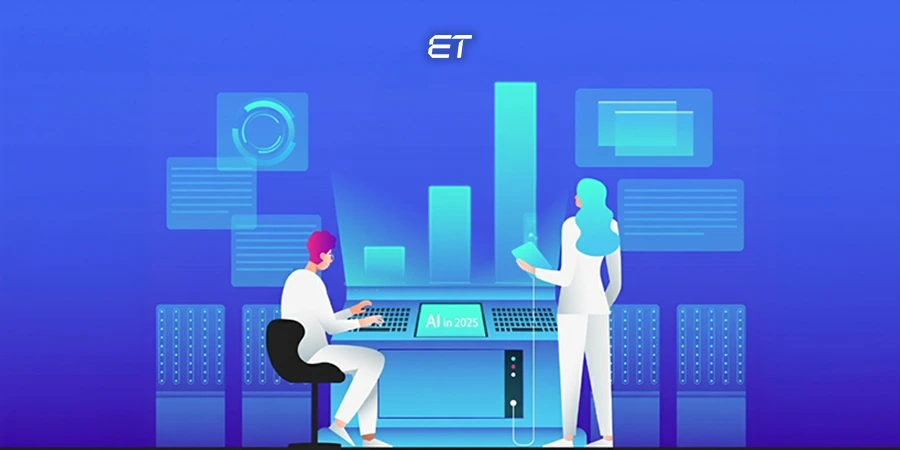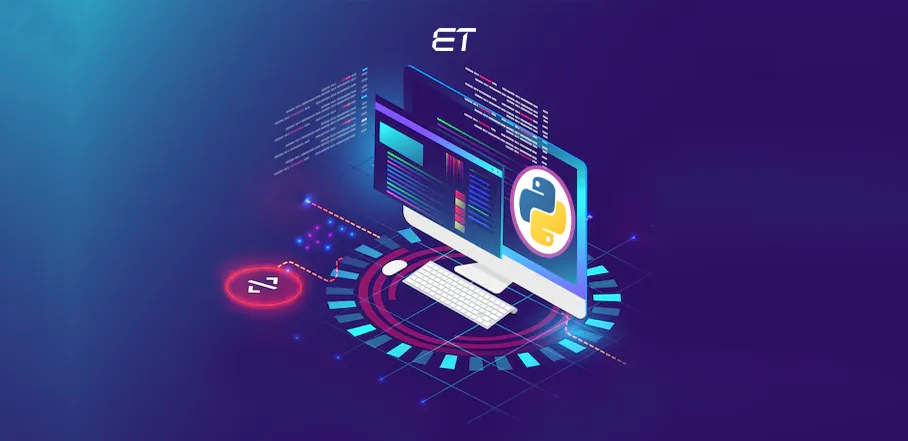
Python Development Outsourcing Services – Detailed Guide
Picture this: Your project needs a skilled Python developer, but the talent pool has dried up. Sounds familiar? Many companies are facing this challenge, struggling to find and retain top-tier programmers. That’s why Python development outsourcing has become such a hot topic.
Python’s popularity is undeniable. With over 51% of developers worldwide using this versatile language, it’s become the backbone of several applications. This extensive adoption, however, has also created fierce competition for skilled Python programmers.
So, how can you access this in-demand expertise without sacrificing quality? This blog post is your detailed guide to all things ‘outsource Python development,’ exploring the benefits, challenges, and best practices to help you make the best decision.
Stop searching. Find top Python developers to kickstart your project.
Why Outsource Python Development?
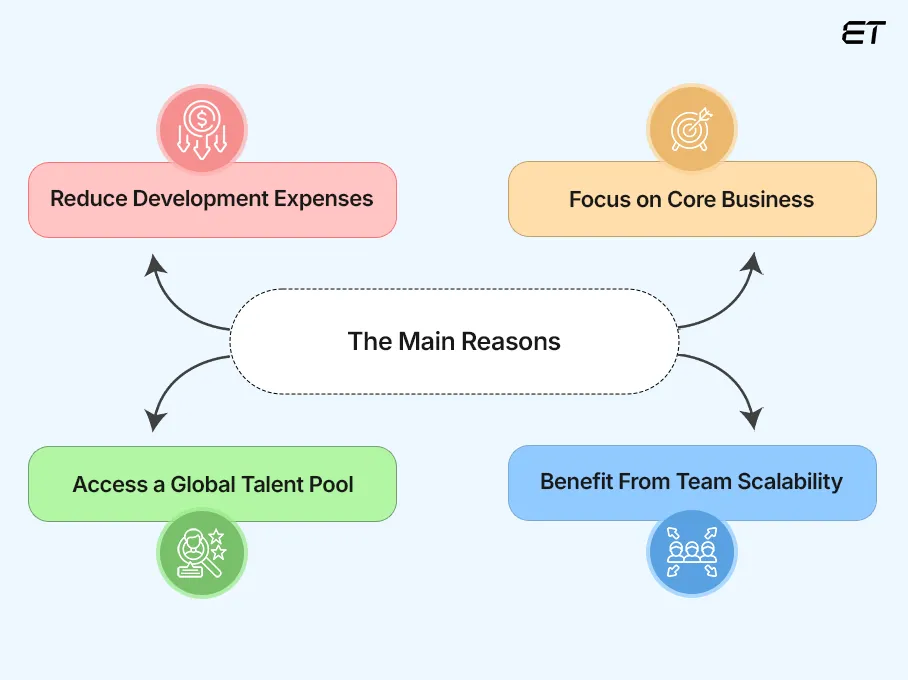
Let’s be honest, you’re busy. Building a successful business means handling numerous things, and sometimes, finding the right expertise can seem impossible.
That’s where the magic of Python development outsourcing comes in. Consider the following points:
- Outsourcing can reduce your development expenses. You avoid the costs associated with recruitment, salaries, benefits, and office space. Instead, you pay for the specific skills you need, when you need them
- When you outsource Python development, you can access a global talent pool. The best Python developers aren’t always located in your backyard. Outsourcing opens doors to a world of talent, allowing you to tap into specialized expertise that might be hard to find locally
- Let’s not forget about the focus on your core business. Do you really want your team bogged down with tasks that aren’t their core strength? By outsourcing your Python development, you free up your in-house team to focus on what they do best
Overall, Python development outsourcing provides the flexibility to scale your team up or down, ensuring you have the right resources at the right time, without the headaches of hiring and firing.
When to Outsource Python Development Services?
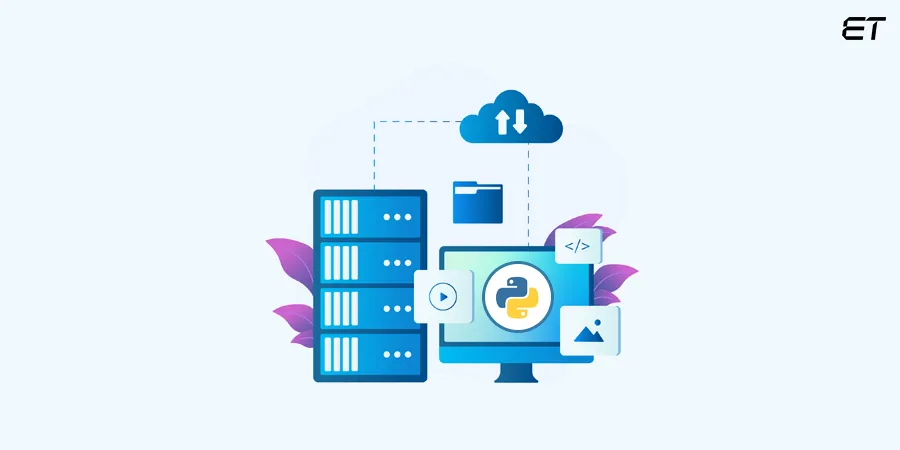
Now, focus on the ideal time to outsource Python development services. And no, it’s not when your team is overburdened with projects.
Here are the instances when you must consider outsourcing Python development.
1. Niche Expertise Requirement: Some projects in domains like AI, data science, or automation require advanced knowledge of libraries like TensorFlow or Pandas. If your in-house team lacks this, outsourcing to specialists saves time and prevents technical debt.
2. Expanding to New Platforms: Trying out a new technology or platform? Outsource the experimental phase. This step lets you check feasibility without exceeding the budget.
3. For Short-Term Projects: Outsourcing is ideal for MVPs, prototypes, integrations, or feature additions that don’t need full-time developers.
4. Need for Fast Deployment: If you’re planning to launch a product quickly, outsourcing lets you onboard skilled developers faster than traditional hiring.
5. To Minimize Risks: Seasoned outsourcing teams often have refined QA, DevOps, and documentation practices. Their experience helps mitigate risks such as compliance violations and budget overruns.
Keep these pointers in mind to improve project execution and overall development.
What is the Process of Python Development Outsourcing?
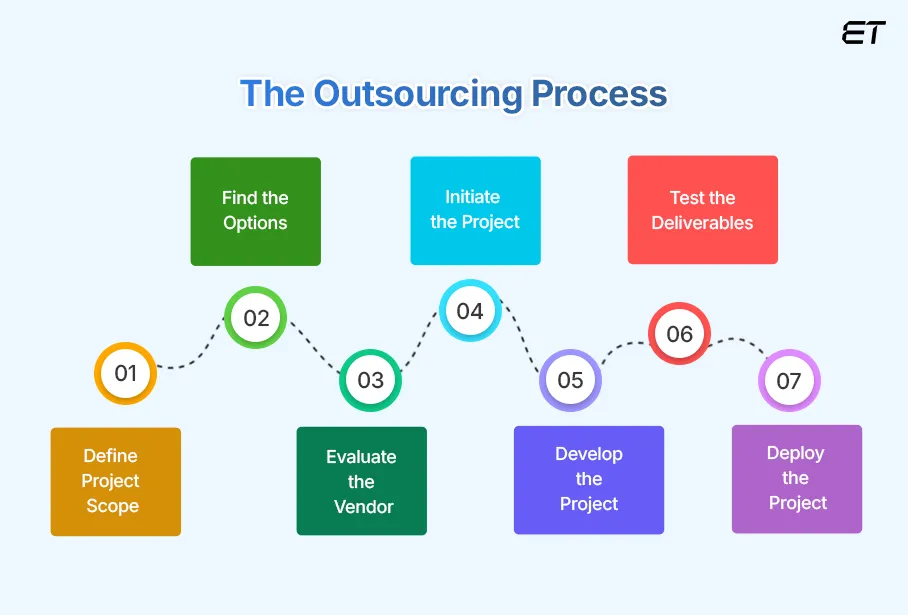
So, you’re ready to explore Python development outsourcing. But where do you start? Fret not. Here’s a breakdown of the key steps.
1. Defining Your Development Scope
Before diving into Python development outsourcing, it’s crucial to understand your project’s scope clearly. You should create a detailed blueprint before starting the project.
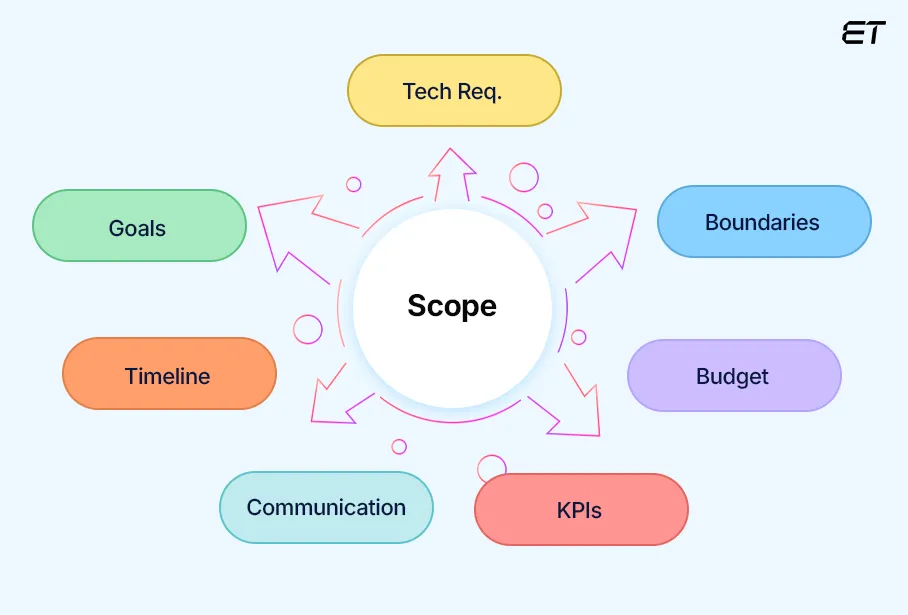
Here are the key aspects to consider:
- Project Goals: What are you hoping to achieve with this Python project? What problem are you trying to solve or what opportunity are you trying to capitalize on? Clearly defined goals will guide your entire outsourcing process
- Technical Requirements: What specific Python skills and technologies are required? Do you need expertise in specific frameworks like Django, Flask, or Pandas? Are there any specific libraries or tools that are essential for your project? Be as detailed as possible
- Project Scope: What are the boundaries of your project? What features are included, and what are excluded? A well-defined scope helps prevent scope creep and keeps the project on track
- Timeline and Budget: When do you need the project completed? What’s your budget? Having a realistic timeline and budget in mind will help you find a provider that aligns with your constraints
- Communication and Collaboration: How do you envision working with your outsourced team? What collaboration tools and methods will you use? Establishing clear communication protocols from the start is essential for a successful partnership
- Success Metrics: How will you measure the success of your project? What key performance indicators (KPIs) will you track? Defining success metrics upfront allows you to assess the effectiveness of your outsourcing strategy
All in all, by defining your needs, you’ll be well-prepared to choose a Python development outsourcing partner and set your project up for success.
2. Finding the Perfect Partner
Now that you’ve defined your needs, the exciting part begins: the hunt for your ideal Python development outsourcing partner!
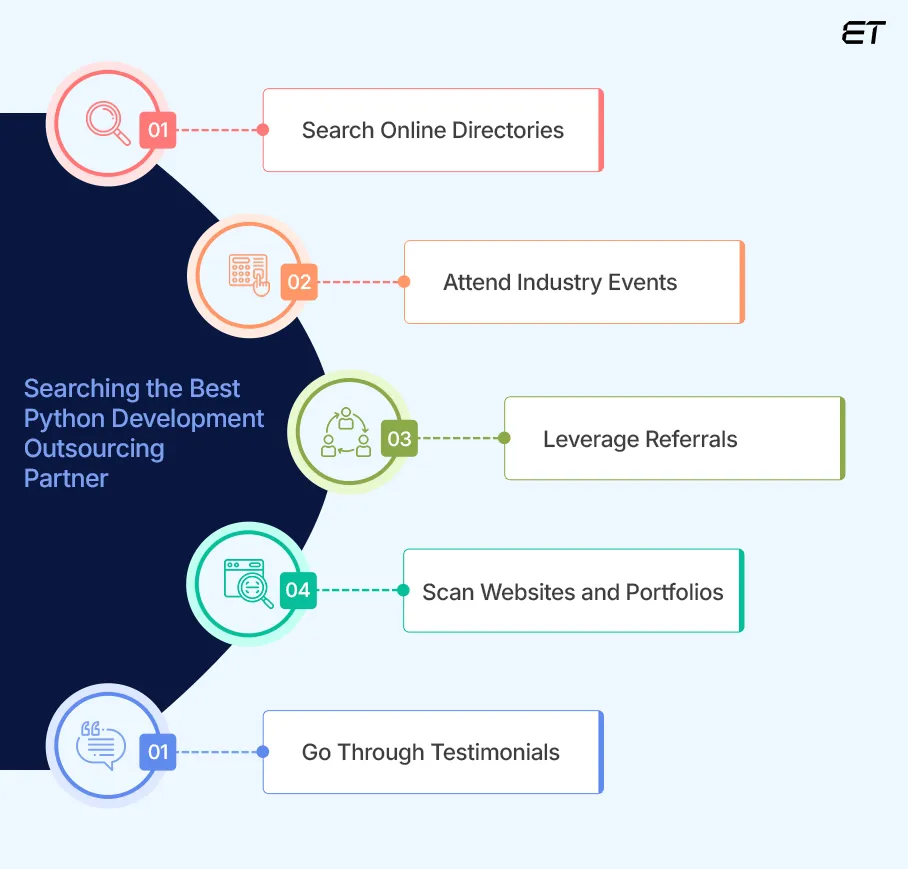
Here’s how you can effectively research potential partners:
- Online Directories and Platforms: Start by exploring online directories and platforms that list outsourcing providers. Clutch, GoodFirms, and Upwork are great resources for finding reputable companies
- Industry Events and Conferences: Attending industry events and conferences can be a fantastic way to network and connect with potential outsourcing partners
- Referrals and Recommendations: Reach out to your network and ask for referrals and recommendations
- Provider Websites and Portfolios: Once you’ve identified some potential partners, visit their websites and review their portfolios. Look for projects that are similar to yours and pay attention to their technical expertise and design skills
- Client Testimonials and Case Studies: Client testimonials and case studies provide valuable insights into a provider’s track record and client satisfaction
- Areas of Expertise: Different providers specialize in different areas of Python development. Some might focus on web app development, while others might specialize in data science or machine learning. Make sure the provider you choose has the specific expertise you need for your project
By conducting thorough research, you’ll be well on your way to finding the perfect Python development outsourcing team.
Need a list of the best IT consulting firms in the US? Find the perfect partner for your project.
3. Evaluating and Selecting the Partner
You’ve done your research and explored the landscape, and now it’s time for the crucial step: evaluating and selecting your Python development outsourcing partner.
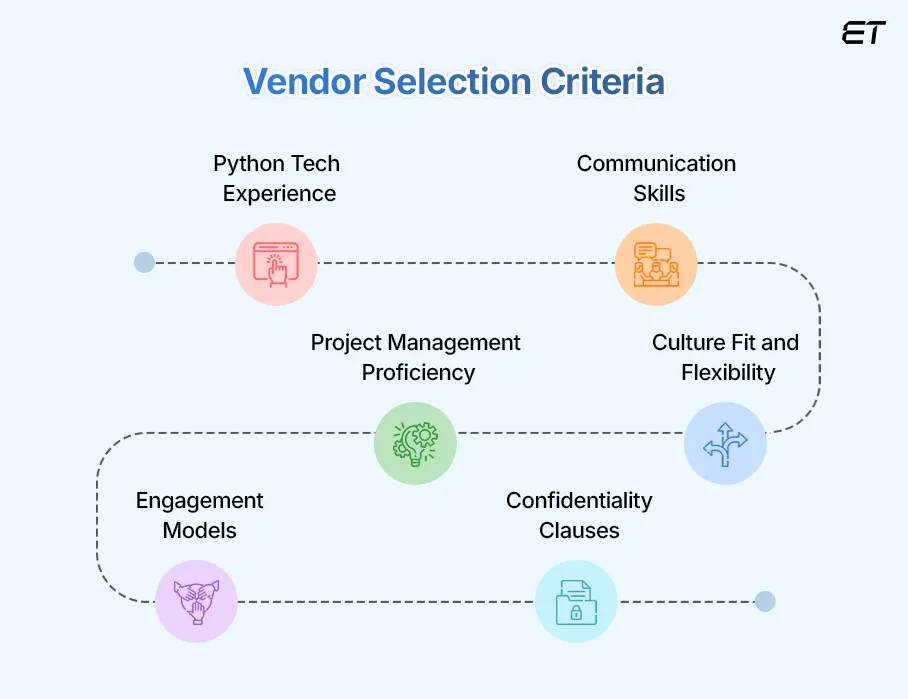
Here’s what to consider during the evaluation process:
- Technical Expertise: Does the provider have the specific Python skills and experience you need for your project? Consider asking for code samples or conducting technical assessments
- Communication Skills: Clear and consistent communication is paramount for a successful outsourcing partnership. Pay attention to their communication style and ensure it aligns with yours
- Project Management Capabilities: How do they manage their projects? Do they have a clear project management methodology in place? Ask about their processes for tracking progress, managing deadlines, and handling potential roadblocks
- Cultural Fit: While technical skills are important, cultural fit is also a key consideration. A good cultural fit fosters a strong working relationship and promotes collaboration
- Pricing Models: Understand the Python development outsourcing provider’s pricing models and make sure they align with your budget. Are they charging hourly and fixed prices or a hybrid approach? Be clear about what’s included in the price and what’s not
- Client Testimonials and Case Studies (Revisited): Go back and review client testimonials and case studies, paying close attention to feedback related to communication, project management, and overall satisfaction
- Security and Confidentiality: If your project involves sensitive data, security and confidentiality are critical. Inquire about their security protocols and data protection measures
To sum up, choose a Python development outsourcing partner that best meets your needs and sets your project up for success. This is a crucial investment, so take your time before taking the final call.
A request for proposal (RFP) can help choose the best Python development partner. Read our blog to note the systematic process of drafting your RFP.
4. Initiating Your Python Project
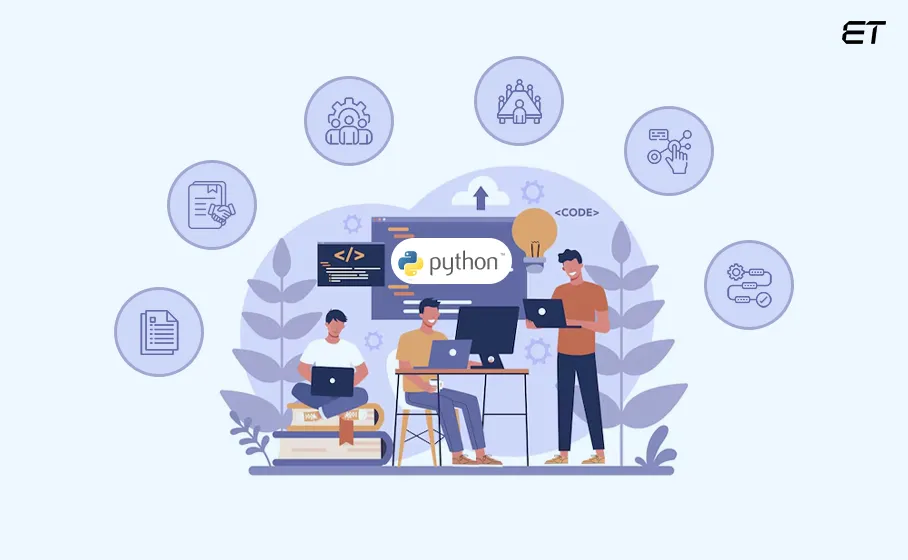
By this stage, you’ve chosen your Python development outsourcing partner. Now, it’s time to launch your project officially. This is the onboarding phase, where you lay the groundwork for a smooth collaboration.
Here’s what’s involved in a successful onboarding and project kickoff:
- Formalizing the Agreement: Ensure all contracts and agreements are finalized and signed
- Introducing the Teams: Introduce your in-house team to the outsourced team and vice versa. This activity helps build rapport and nurtures a sense of collaboration
- Project Kickoff Meeting: Schedule a kickoff meeting to launch the project officially. This meeting should involve key stakeholders from both sides and cover the project scope, timelines, milestones, and communication protocols
- Setting Up Communication Channels: Establish clear communication channels from the start. What tools will you use for project updates, feedback, and general communication? Will you use Slack, email, project management software, or a combination of tools? Make sure everyone is comfortable with the chosen platforms
- Sharing Project Documentation: Provide your outsourced team with all necessary project documentation, including requirements specifications, design documents, and any relevant code repositories
- Establishing Reporting Procedures: How will you track progress and monitor performance? Establish clear reporting procedures and set up regular meetings to discuss progress, address any challenges, and ensure the project stays on track
- Defining Roles and Responsibilities: Clearly define the roles and responsibilities of each team member. Who is responsible for what? Who is the point of contact for specific questions or issues? Clear roles and responsibilities prevent confusion and ensure accountability
Note that this initial investment in planning and communication will pay off in the long run.
5. The Main Python Development
This stage is all about the actual development phase. But it’s not just about coding; it’s about collaboration, communication, and working in sync with your outsourced Python development team.
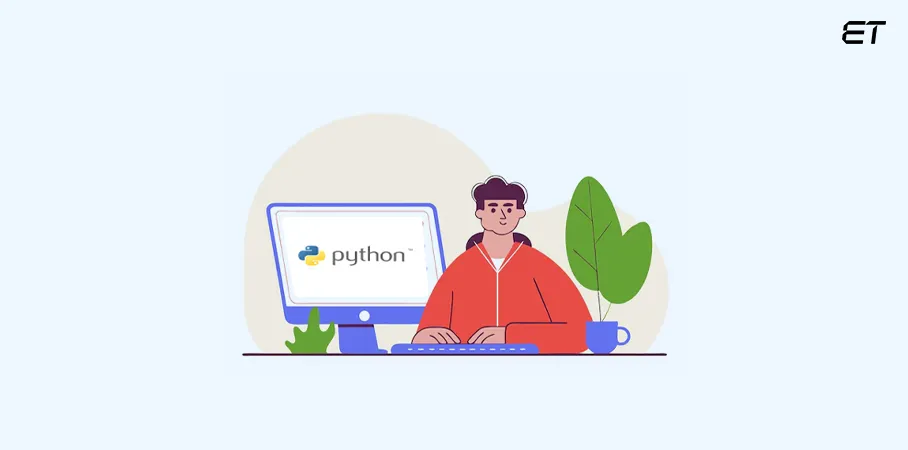
Here’s how to ensure smooth collaboration during the development process:
- Regular Communication: Maintain consistent and open communication with your outsourced team. Use the communication channels you established during onboarding to share updates, provide feedback, and address any questions or concerns promptly
- Transparent Project Management: Use a project management tool to track progress, manage tasks, and share updates. This provides transparency and keeps everyone on the same page
- Constructive Feedback: Provide regular and constructive feedback to your outsourced team. Be specific about what you like and what you’d like to see improved
- Agile Approach (If Applicable): Consider adopting an agile development methodology like Scrum or Kanban. Agile practices emphasize iterative development, frequent feedback, and close collaboration
- Version Control: Use a version control system like Git to manage the codebase. This allows multiple developers to work on the project simultaneously without conflicts
- Code Reviews: Conduct regular code reviews to ensure code quality and identify potential issues early on. Code reviews are a great way to share knowledge and best practices within the team
- Problem Solving: Be prepared to address challenges and roadblocks that may arise during the development process. Work collaboratively with your outsourced team to find solutions
All in all, by developing a collaborative and communicative environment, you can ensure that your Python development project stays on track and delivers the results you’re looking for.
6. Testing the Python Project
Before you unleash your Python project, there’s one crucial step: testing and quality assurance (QA). Think of this step as the final inspection.

Thorough testing is essential for identifying and fixing any bugs, errors, or performance issues before they impact your users. Here are the key aspects of Python project testing and QA:
- Test Planning: Before testing begins, create a comprehensive test plan that outlines the scope of testing, the types of tests to be performed, and the testing environment
- Test Automation: Automate as much of the testing process as possible to save time and improve efficiency. There are various Python testing frameworks and tools available to help you automate your tests
- Bug Tracking and Reporting: Use a bug tracking system to log and track any bugs or issues that are discovered during testing
- Collaboration with the Development Team: Testing and QA should be a collaborative process between the testing and the development team
- User Acceptance Testing (UAT): Before the final launch, consider conducting user acceptance testing with a group of representative users
Overall, by investing in thorough testing and QA, you can ensure that your Python project is high-quality, reliable, and ready to impress your users.
Looking for an accomplished QA and Testing team? Your search is now over!
7. Deploying the Python Project
This is the last Python development outsourcing stage where your project goes live, becoming accessible to users. But the journey doesn’t end here. Your Python application needs ongoing maintenance and support to ensure it continues to perform optimally.

Here’s a breakdown of what’s involved in deployment and maintenance:
- Deployment Planning: Before deployment, create a detailed plan that outlines the steps involved, the launch environment, and any necessary configurations
- Final Execution: Follow your deployment plan, ensuring that all necessary files and configurations are correctly deployed to the production server
- Post-Deployment Testing: After deployment, conduct post-launch testing to verify that the application is functioning correctly in the live environment
- Security Updates and Patching: Stay up-to-date with security updates and patches for your Python framework, libraries, and operating system
- Bug Fixes and Issue Resolution: Be prepared to address any bugs or issues that may arise after deployment
- Ongoing Maintenance and Support: Your application will likely require ongoing maintenance and support, such as adding new features, fixing bugs, and addressing user feedback
By following these steps, you can ensure that your Python project continues to perform at its best.
The Best Cooperation Models in Python Outsourcing
Choosing the right cooperation model is just as important as selecting the right development team. It’s about finding the perfect fit for your project’s needs, budget, and management style.

Here’s a brief explanation of the most common cooperation models in Python outsourcing:
1. Fixed Price Model: This model is ideal for projects with clearly defined scopes and requirements. You agree on a fixed price upfront for the entire project. It offers budget certainty but requires meticulous planning and detailed specifications.
2. Time and Materials Model: This model is more flexible and works well for projects with evolving requirements. You pay for the time and materials used by the development team. It’s like hiring a contractor by the hour – you pay for their time and expertise. One of the best aspects of this model is that it offers greater flexibility but requires close monitoring and management.
3. Dedicated Team Model: This model provides you with a dedicated team of developers who work exclusively on your project. It’s like having your own in-house development team but without the overhead of hiring full-time employees. It offers the highest level of control and flexibility and is ideal for long-term projects.
4. Project-Based Model: This hybrid approach combines elements of the fixed price and time and materials models. You agree on a fixed price for specific milestones or deliverables within the project. It offers a balance between budget certainty and flexibility.
Now, the following table will quickly summarize when to use a specific model:
| Cooperation Model | When to Use |
| Fixed Price | Small, well-defined projects with fixed requirements. |
| Time & Materials | Large, complex projects with evolving requirements. |
| Dedicated Team | Long-term projects, large-scale initiatives, projects needing specialized skills. |
| Project-Based | Projects with clear phases or milestones, balancing fixed price and flexibility. |
All in all, consider your project’s size, complexity, budget, and desired level of control when making your decision on the cooperation models.
Important Considerations When Outsourcing Python Development
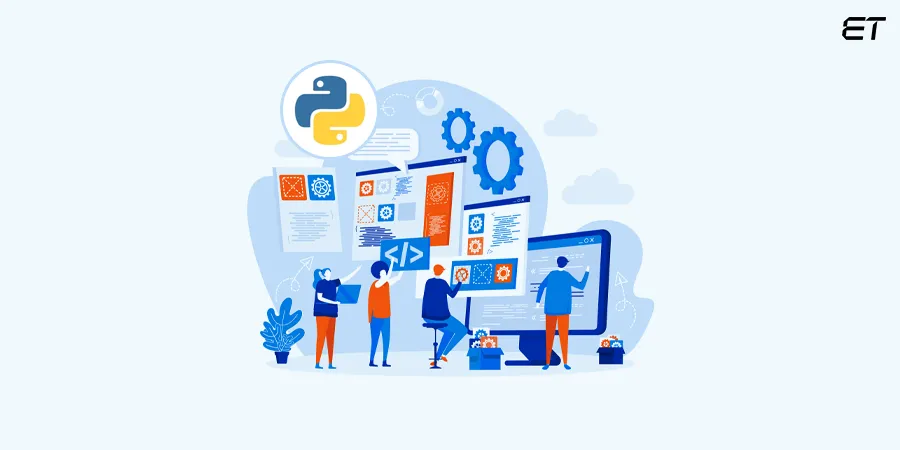
Choosing a Python development outsourcing company isn’t a walk in the park.
Even after understanding the stages and processes associated with outsourcing, there are factors you still need to keep in mind. The table below explains these considerations in detail.
| Consideration | Explanation |
| Assess Internal Readiness |
|
| Legal and Compliance Awareness |
|
| Time Zone Compatibility |
|
| Code Ownership and Licensing |
|
| Post-Launch Support |
|
| Scalability of the Partner |
|
| Cultural and Language Compatibility |
|
So, Is Python Development Outsourcing a Smart Move?
The answer to our main question is a resounding YES! Python development outsourcing gives you access to a global talent pool, reduces costs, allows you to focus on your core business, and provides the flexibility to scale your team as needed.
By defining your needs, researching potential partners, and choosing the right cooperation model, you can set your project up for success. Furthermore, with clear communication, collaboration, and a focus on quality, you can ensure that your outsourced Python development project delivers exceptional results.
Whether you’re a startup looking to build your first MVP or a large enterprise seeking to scale your development efforts, outsourcing offers a strategic advantage. So, choose an experienced partner to outsource Python development and get the best results.
We have vetted Python developers ready to work on your project.
Top 5 Python Development Outsourcing Companies
Looking for a Python development outsourcing company for your next project? Here are the top 5 organizations you can choose from.
1. IBM

Founding Year: 1911
Country of Origin: United States
Website: IBM
IBM is a multinational technology consulting organization offering enterprise-grade development services in Python, data engineering, analytics, and AI.
Their Open Enterprise SDK for Python on z/OS enables Python use on mainframes, boosting automation, API development, and legacy integration.
Plus, IBM’s offerings include Python-enabled AI toolkits and infrastructure automation using Ansible. It enables enterprises to upgrade Python workflows and enhance existing systems.
2. eLuminous Technologies

Founding Year: 2002
Country of Origin: India
Website: eLuminoustechnologies
eLuminous Technologies is a global software development firm headquartered in Nashik, India, with offices in the US, UK, and South Africa.
With over 150 in-house certified engineers, they offer tailored Python outsourcing services. Other services include web development, enterprise app development, AI/ML, automation, API integration, and IoT solutions.
eLuminous Technologies excels in building custom digital solutions, leveraging a wide tech stack. Their innovation and results consistently earn top ratings on platforms like Clutch and GoodFirms.
3. Toptal

Founding Year: 2010
Country of Origin: USA
Website: Toptal
Toptal is an elite talent marketplace connecting the top Python developers with leading companies worldwide. They offer flexible engagement models (hourly, part-time, and full-time) and a no-risk trial to ensure a good fit.
Their Python services cover backend development with Django/Flask, automation, data analytics, and machine learning.
With a global remote network of core and freelance talent, Toptal quickly matches clients to vetted engineers. Their strict screening process ensures that clients have access to elite Python developers with proven expertise.
4. Infosys

Founding Year: 1981
Country of Origin: India
Website:Infosys
Next on our top Python development outsourcing companies list is Infosys, the Indian tech MNC. It’s a global leader in consulting, IT, and outsourcing, with a presence in over 50 countries.
Its services span digital transformation, cloud, AI, systems integration, and business process outsourcing. Python often powers Infosys’s data analytics, machine learning, automation, and application development solutions.
Moreover, Infosys delivers end-to-end Python-based platforms—from backend systems to scalable microservices and enterprise APIs.
5. Accenture
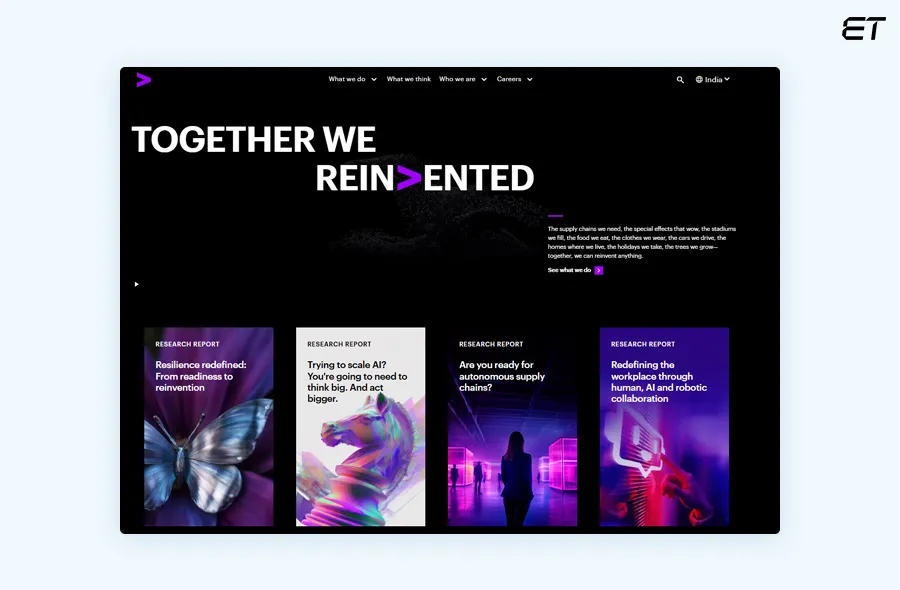
Founding Year: 1989
Country of Origin: Ireland
Website: Accenture
Accenture is a global professional services and outsourcing giant with over 733,000 employees worldwide. Their Technology services include Python-based solutions for application development, data analytics, AI, automation, and cloud migration.
Accenture engages global delivery teams across technology hubs to help clients implement Python-driven digital transformation strategies.
They deliver large-scale enterprise software, machine learning pipelines, and intelligent automation to streamline operations.
Frequently Asked Questions
1. What if I have concerns about communication and time zone differences with an outsourced Python team?
Effective communication is crucial. Many Python development outsourcing providers offer flexible communication schedules to bridge time zone gaps. Discuss communication strategies upfront to ensure seamless collaboration.
2. How can I protect my intellectual property when outsourcing Python development?
Protecting your IP is essential. Ensure your contract includes confidentiality agreements (NDAs) and clauses regarding ownership of code and deliverables. Discuss security protocols and data protection measures with potential Python development outsourcing partners.
3. What is the typical cost of Python development outsourcing?
The cost varies depending on project complexity, the provider’s location, and your chosen cooperation model. Request quotes from multiple providers and compare their pricing structures to find the best fit for your budget.
4. Can I outsource just a part of my Python project?
Yes, absolutely! Outsourcing can be a great way to supplement your existing team or handle specific aspects of your project. Whether you need help with front-end development, back-end logic, or testing, Python development outsourcing offers flexibility.
5. How much does it cost to hire a Python developer?
The cost of hiring a Python developer depends on factors such as expertise, experience, project complexity, and location. Typically, the cost ranges from USD 30 to USD 200 per hour.
6. What are the challenges, and how to overcome them in Python development outsourcing?
The common challenges in Python development outsourcing and ways to overcome them are:
- Code Quality Issues – Enforce code reviews, automated testing, and coding standards.
- Security Concerns – Sign NDAs and use secure development practices and access controls.
- Lack of Project Visibility – Use tools like Trello, Asana, or Jira for real-time tracking and transparency.
- Inconsistent Delivery – Set clear milestones, deadlines, and use agile sprints to ensure steady progress.
Consider these issues while choosing outsourcing partners for better planning.



